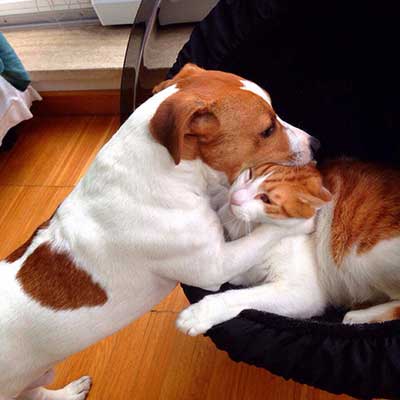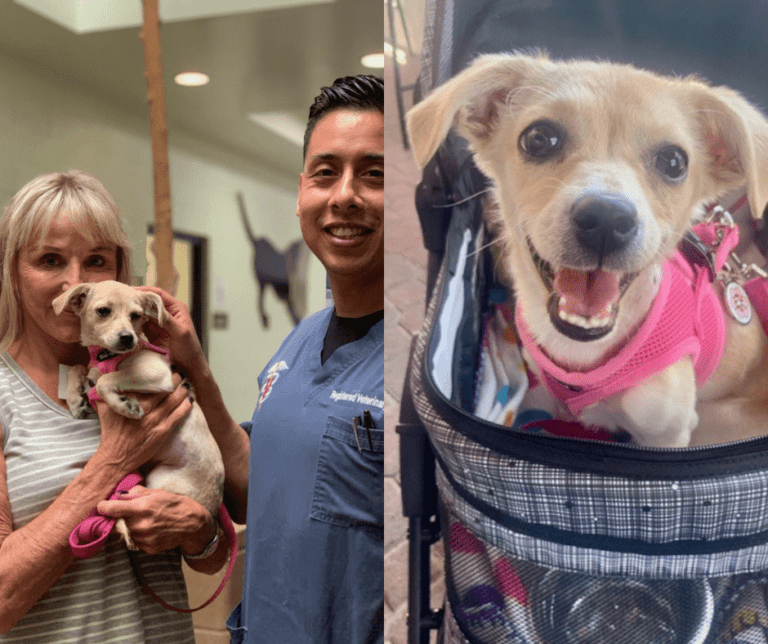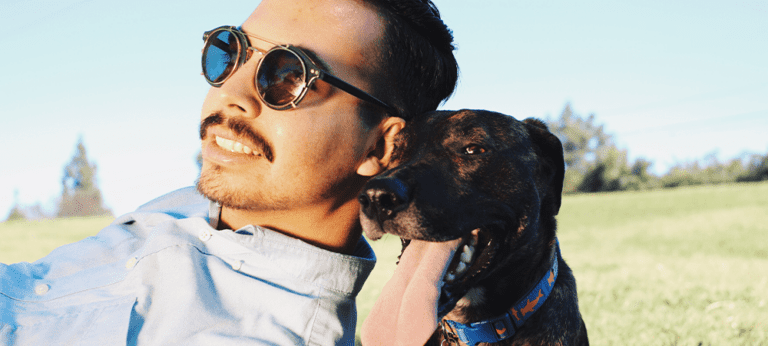Introducing Your New Dog to Existing Pets

Just adopt a new dog? Great! Now, what’s going to happen when you introduce your new furry friend to the one who’s already at home? You hope they’ll like each other, and they might, but a lot of it comes down to making a proper introduction.
Yep, there’s a process to introducing two dogs. When introducing a new dog to your existing pets, the first rule is that the initial time together should be supervised. Here are some helpful tips you can use when introducing a new dog to other dogs in the household.
Just adopt a new dog? Download our new dog ownership guide for tips and tricks to acclimate your furry friend.
The Setup
- Choose a neutral location like an unfamiliar park so there is no sense of dominance or submission implied by the location.
- You should have the two dogs on leashes held by two different people so that you can maintain control over the interaction.
- Have treats ready to reinforce any good behavior.
- If you already have more than once dog in the home, introduce each of them individually to the newcomer. Make sure that each dog is comfortable with one another before putting them together in your home.
The Introduction
- Use a happy and upbeat tone of voice during the introduction and praise good behavior.
- Give your dog familiar commands so that he remains attentive to you throughout the introduction.
- Be patient, as forcing them together prematurely will not help the dogs and can potentially be scary or dangerous for all parties involved.
Behavior
- A normal, acceptable greeting has loose body postures, as well as each dog allowing and engaging in sniffing the other dog.
- Tail wagging doesn’t necessarily mean that the dogs are happy. Lip curling, growling, staring, and stiffening of the body or tail are all warning signs.
- If you do notice any tension building between the dogs, back the dogs away and try reintroducing them once they each have calmed, perhaps putting a greater distance between them. Each time they can get closer, reward them and praise to encourage this excellent behavior.
- A “play bow” (lowering their front legs to the ground while keeping their butts in the air), indicates that the dog seeks to engage in play. However, just because one dog wants to play does not mean the other dog is ready. Again, watch both dogs’ body language during each interaction.
- It is possible that your dog(s) display indifference about the interaction – this is still a good thing. Praise the dogs and give them treats for this great behavior.
After the Introduction
- Keep the dogs in separate rooms until you are successful at introducing them and completely confident in leaving them alone.
- Be sure to feed each of the dogs separately so there is no possessiveness over food.
Introducing Dogs of Different Ages
When introducing a new puppy to your existing dog, you should definitely supervise their first few interactions. Young puppy energy can often be annoying to older dogs so they will growl or snap to set boundaries. If your dog has a history of aggression or serious biting, it is better to keep the two separated until your puppy is a bit larger and able to handle an adult dog. Again, introduce them in a neutral area and on leashes. Senior dogs might take a bit longer to warm up to a new puppy, so be patient.
Introducing New Dog to Other Pets
If you’re introducing your new dog to an existing cat or other small pet, be sure to supervise the interaction even more closely as there is more potential for harm. The smaller animal should have a place to go to get away from the larger one. That might mean the top of the cabinet, a safe spot in their cage, or another room. Never force the interaction. They must get to know one another on their terms but should always have separate places to go if they feel threatened or frightened. Cats can flee to higher perches and bunnies to their cages. Any “pocket pets” that are kept in cages should have a secure lid that is dog-proof and a place where they can go inside their cage and not see the dog. They see the dog as a predator and need to feel safe and secure in their home.
Troubleshooting
If you have tried repeatedly to get your new dog integrated into the household with no success, contact a professional animal behaviorist. Your veterinarian can recommend someone in your area who can expedite their positive interaction. Don’t hesitate to contact an expert—dog fights can be serious and can potentially cause harm to both dogs. Getting the right start can set the stage for a long and loving relationship.
The Michelson Found Animals Foundation’s mission of saving pets and enriching lives is made possible by the generous contributions of Dr. Gary Michelson and Alya Michelson.


